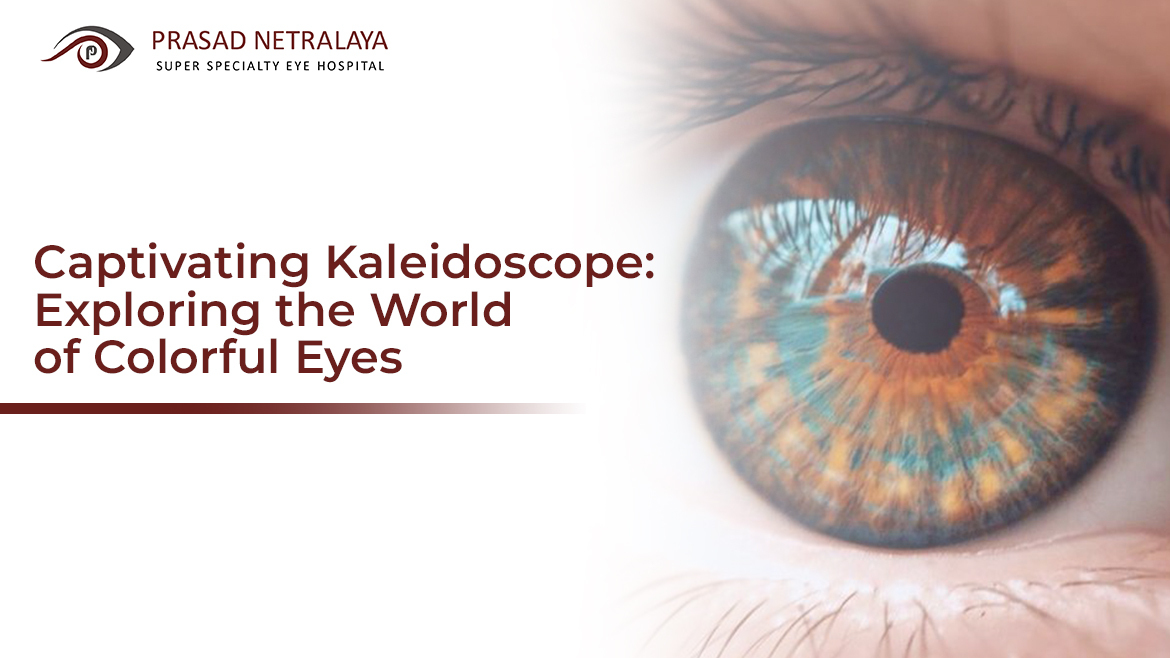With the ability to see and navigate the world, eyes are essential to human functionality. With the prevalence of neurological disorders and migraines in today’s digitally linked society, kaleidoscope vision has become a noteworthy problem.
Discover the dynamic connection between the brain and eyes through a visual portal. Learn about kaleidoscopic vision and its role in promoting preventative eye care. This blog explores the causes and precautions related to kaleidoscope eyes, offering essential insights for maintaining optimal eye health.
Table of Contents
What Is Kaleidoscope Eyes?
Kaleidoscope eyes are a visual symptom connected to diseases, including migraines, strokes, and brain traumas, rather than a separate ailment. Individuals experiencing kaleidoscope vision can perceive their view as jumbled, brightly coloured, or disorganized, just like looking through a kaleidoscope.
What Are the Significant Causes of Kaleidoscope Vision?
For those who have kaleidoscope vision, it is essential to comprehend the various origins of this visual disturbance.
1. Visual Auras
Visual auras, which can involve kaleidoscopic eyes, frequently occur before migraines—adjustments in the brain’s electrical activity and blood flow cause these auras. The vivid and dynamic patterns are an early warning indicator of a migraine attack.
2. Ocular Migraines
Specifically affecting the eyes, ocular migraines result in transient vision impairments. The comparison of complex, vibrant patterns seen during these periods with kaleidoscope vision. Ocular migraines are usually brief, although they can seriously impair normal vision.
3. Retinal Problems
Retinal conditions, including retinal migraines, have been related to kaleidoscope vision. These include transient loss of vision or abnormalities brought on by decreased blood supply to the retina. During these instances, kaleidoscopic patterns may appear, which reflects the fleeting nature of the visual disruptions.
4. Neurological Diseases
Several neurological diseases, such as strokes or severe brain injuries, can cause kaleidoscope eyes. Vibrant and disjointed visual sensations may arise from optic nerve or visual cortex disorders. Recognising and treating these neurological variables is essential to provide the proper care.
Read More: Hereditary and Genetic Eye Diseases: Genetic Factors in Vision Problems
What Are the Key Precautions and Tips to Avoid Kaleidoscope Vision?
Here are some essential precautions and tips you must consider to prevent kaleidoscopic vision.
1. Migraine Management
To develop a migraine management plan with a healthcare physician, you should include identifying triggers and making lifestyle modifications.
2. Stay Hydrated
Drink water throughout the day to stay hydrated, as dehydration can contribute to your headaches and migraines.
3. Regular Meals
Eating regular, well-balanced meals will keep your blood sugar levels stable. For some people, skipping meals can cause severe migraine issues.
4. Stress Reduction
To assist in managing stress, which can be a migraine trigger, you must try stress-reduction practices like meditation, deep breathing exercises, or yoga.
5. Exercise Regularly
For certain people, regular exercise helps to reduce the frequency and intensity of migraines. Regular exercise generates several physiological and neurological adjustments that could affect the occurrence of migraines.
6. Consistent Sleeping Patterns
You should establish and maintain regular sleeping patterns to avoid kaleidoscope vision concerns. A lack of or inconsistent sleep might exacerbate migraines and visual disturbances.
7. Limit Caffeine and Alcohol
It is advisable to restrict the consumption of coffee and alcohol, as both of these substances can aggravate blood vessels, cause dehydration, and release compounds such as tyramine in alcohol, which can intensify migraines.
8. Schedule Eye Care
To protect yourself from kaleidoscope eyes, scheduling frequent eye tests to ensure good eye health is necessary. Headaches and visual disturbances can exacerbated by vision issues or eye strain.
9. Determine Triggers
Keep a migraine track to probable triggers such as meals, environmental variables, or stressors that can precede kaleidoscopic vision episodes.
How Long Do Kaleidoscope Eyes Last?
The kaleidoscope vision episodes, identified by split, effectively coloured, or perplexed visual impressions, often last 10 to 30 minutes. While these events are usually short, they can sometimes last up to an hour. The temporal aspect of kaleidoscope vision corresponds to its relationship with migraines, when it may function as a visual aura.
Recognizing the duration of these episodes is critical, as it allows for immediate medical intervention for a complete evaluation and suitable management. Persistent or recurring instances may necessitate further evaluation of potential underlying health issues.
Exploring the Kaleidoscope Vision: Insights and Pathways for Optimal Eye Health
The vivid kaleidoscope vision patterns symbolize all aspects of eye health. You will find the best possible eye health routes by learning about the causes, such as visual auras or retina problems. Visual auras, which frequently follow migraines, offer an essential connection between neurological conditions and eye health. You must carefully consider your overall eye health, including routine exams, lifestyle modifications, and knowledge of potential triggers.
Take a proactive step towards vibrant eye health. Contact Prasad Netralaya Eye Hospital to schedule your comprehensive eye test today and unlock the kaleidoscope of well-being.
Dr. Vikram Jain, M.S. had his medical training (MBBS) from Kasturba Medical College, Mangalore, India. He did his master’s in Ophthalmic surgery from Kasturba Medical College, Manipal. He currently manages the Glaucoma department of Prasad Netralaya hospital.



